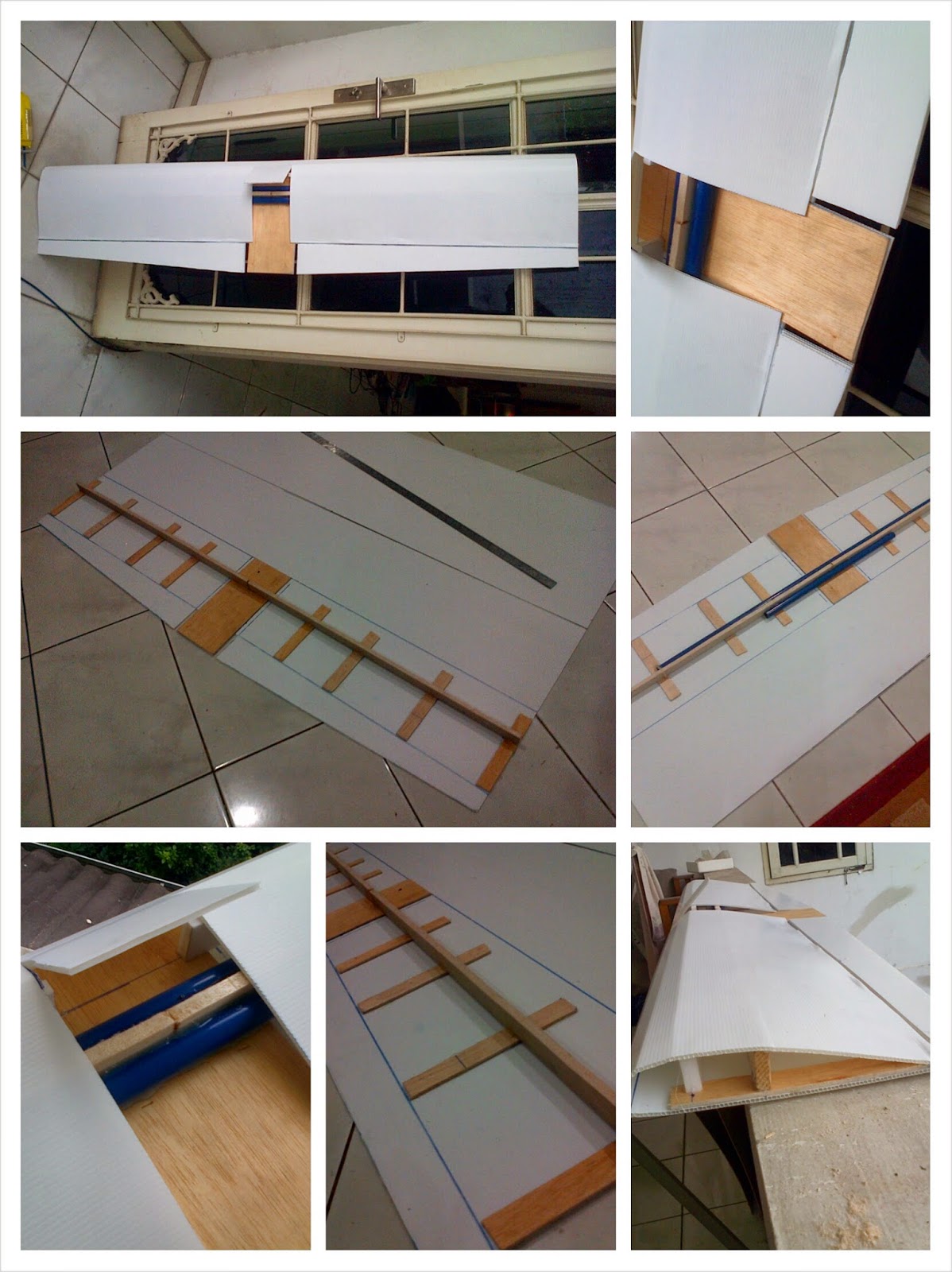As always, referring to built one and making improvement of it gradually...
It started with taking my Delta Jet Blue into my bedroom. Put it on 2x1 M depron sheet (6mm thickness)...
Learning from the mistake made and imagining what the jet plane would be look like, as you can see how it was started by looking at the pic below:
The spar (skeleton if i may say) comes from Shoe Rack bought from Giant Supermarket. I believe it was strong and it's been proven ...yes...it is so strong and could be considered light also (rather than putting fiber carbon spar which is more expensive).
The imagination is clearer when putting the EDF on to the sheet:
As you can see form the latest picture above, i put coroplast in the fuselage to enforce it and it is good when attaching the battery onto it.
Now, we need to prepare the spar and engine mount.
Can you see that the wood comes from the shoe rack !
This is the look when the EDF was mounted into it:
Do not forget to put CA into the screw holes to make it stronger.
This is the look when putting them together:
Now, it is ready to glue them with "hot glue".
Up to this, you should get an idea already how the plane was made....
It started with taking my Delta Jet Blue into my bedroom. Put it on 2x1 M depron sheet (6mm thickness)...
Learning from the mistake made and imagining what the jet plane would be look like, as you can see how it was started by looking at the pic below:
The spar (skeleton if i may say) comes from Shoe Rack bought from Giant Supermarket. I believe it was strong and it's been proven ...yes...it is so strong and could be considered light also (rather than putting fiber carbon spar which is more expensive).
The imagination is clearer when putting the EDF on to the sheet:
Once, the look seems ok and as always, we can estimate how it will fly by using the following URL:
http://www.ef-uk.net/data/wcl.htm
I would consider creating an RC airplane as an art work since it depends on what kind of plane and characteristics would like to build.
Creating the can bee seen as the two pictures below:
1. Put the tape on the outer surface, the wing edge.
2. Cut excessive foam before folding it.
3. Now, it is ready to fold it.
As you can see form the latest picture above, i put coroplast in the fuselage to enforce it and it is good when attaching the battery onto it.
Now, we need to prepare the spar and engine mount.
Can you see that the wood comes from the shoe rack !
This is the look when the EDF was mounted into it:
Do not forget to put CA into the screw holes to make it stronger.
This is the look when putting them together:
Now, it is ready to glue them with "hot glue".
Up to this, you should get an idea already how the plane was made....























.jpg)











